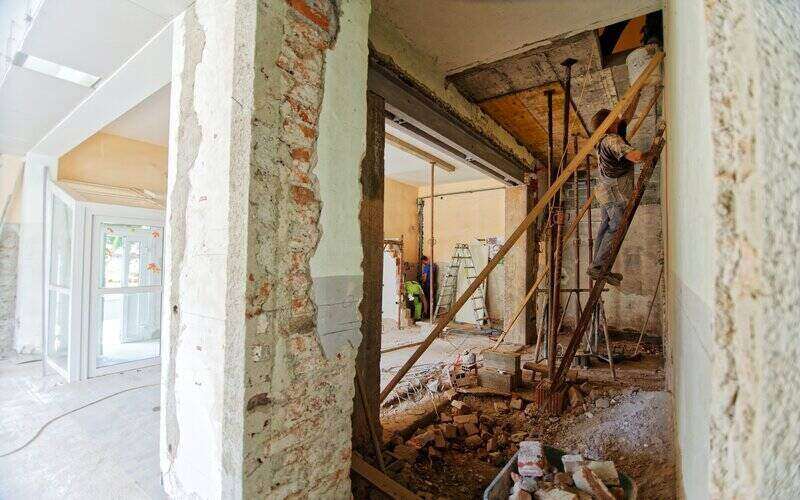The Housing Industry Association (HIA) said the end of stamp duty justifies the means, in a report it submitted to the NSW Treasury's consultation paper Buying in NSW, Building a Future.
This paper was launched after New South Wales Treasurer Dominic Perrottet said the tax was "a relic from a bygone era" and said the State Government was considering axing it.
Buying a home or looking to refinance? The table below features home loans with some of the lowest interest rates on the market for owner occupiers.
| Lender | Home Loan | Interest Rate | Comparison Rate* | Monthly Repayment | Repayment type | Rate Type | Offset | Redraw | Ongoing Fees | Upfront Fees | Max LVR | Lump Sum Repayment | Additional Repayments | Split Loan Option | Tags | Row Tags | Features | Link | Compare | Promoted Product | Disclosure |
|---|---|---|---|---|---|---|---|---|---|---|---|---|---|---|---|---|---|---|---|---|---|
5.79% p.a. | 5.83% p.a. | $2,931 | Principal & Interest | Variable | $0 | $530 | 90% |
| Promoted | Disclosure | |||||||||||
5.74% p.a. | 5.65% p.a. | $2,915 | Principal & Interest | Variable | $0 | $0 | 80% |
| Promoted | Disclosure | |||||||||||
5.84% p.a. | 6.08% p.a. | $2,947 | Principal & Interest | Variable | $250 | $250 | 60% |
| Promoted | Disclosure |
The proposed alternative is a property tax, charged annually, instead of the lump sum stamp duty purchase, which can be tens of thousands of dollars upfront.
HIA’s Chief Economist Tim Reardon said a more equitable and stable tax is needed.
“A constant state of paralysis has resulted in a cascading of tax problems as state governments have become increasingly dependent on stamp duty for revenue," Mr Reardon said.
"This is despite stamp duty being universally recognised as one of the most inefficient and inequitable taxes that does not provide a stable revenue stream.
“As with all sound economic reforms, the benefits of the reform ensure that households disadvantaged from the change can be compensated."
Instead of agreeing with a property tax as the alternative, Mr Reardon simply said that the case for getting rid of stamp duty is so strong that it doesn’t matter which option is adopted as long as stamp duty is abolished.
“Penalising households for pursuing home ownership does not lead to good economic or social outcomes. The efficiency benefits of the removal of stamp are extensive," he said.
"A workforce able to relocate in the pursuit of education and employment opportunities, without incurring punitive taxes, supports a range of family and community goals.
“Households able to move to a home that suits the size of the family and the location of their employment and studies can lead to a more efficient allocation of public investment in transport infrastructure.
“It allows an ageing population to shift closer to family and medical support leading to a more efficient allocation of land and health care resources.
“This isn’t to ignore the challenges of the reform, as they are significant, but in the case for abolition of stamp duty, the end justifies the means."
Related: Why stamp duty is better than a property tax
What are the benefits of removing stamp duty?
It isn't just New South Wales calling for stamp duty to kick the bucket, as property groups and advocates in both Queensland and Western Australia are saying the same thing.
The Real Estate Institute of Western Australia (REIWA) claims it would create $1 billion in economic activity each year just in WA, while the Real Estate Institute of Queensland (REIQ) said its removal would see a 60% increase in property transactions.
“Clearly the abolition of stamp duty – universally acknowledged as the most harmful tax within Australia – must be front and centre of any meaningful tax reform effort at this moment when it’s most needed," REIQ CEO Antonia Mercorella said.
Jobs in construction and housing are plentiful in Australia and tend to provide one of the biggest 'bank for buck' investment opportunities, supporting about nine jobs for every $million spent.
With many state economies still recovering from last year's crisis, the NSW Treasury's report cites that the proposed changes "could provide a critical economic boost at the time we need it the most."
"The proposed changes could inject $11 billion over four years into the economy providing much needed stimulus in the current downturn," the report said.
"It could also deliver the most significant economic reform available right now to strengthen our state’s economy and increase our prosperity over the long term."
The report also says this reform would create 75,000 extra jobs in NSW (+1.4%) and boost the economy by $3,300 per household.
See also: Every state and territory stamp duty exemption
Removing stamp duty could help first home buyers
With the average time taken to save for a deposit surging in recent years, one of the biggest proposed benefits of no stamp duty is helping first time buyers enter the market.
In NSW, it now takes 12.6 years to save for the average house price on an average salary, with stamp duty costs alone ($34,000 on average) taking 2.5 of those years.
In Victoria, government taxes and charges like stamp duty make up one third of home buyer costs, and another study found 60% of first home buyers said they could have entered the market sooner without it.
Fortunately first home buyers can get stamp duty concessions or discounts more easily.
Image via Wikipedia Commons

Ready, Set, Buy!
Learn everything you need to know about buying property – from choosing the right property and home loan, to the purchasing process, tips to save money and more!
With bonus Q&A sheet and Crossword!






 Denise Raward
Denise Raward

 Harrison Astbury
Harrison Astbury
 Brooke Cooper
Brooke Cooper


